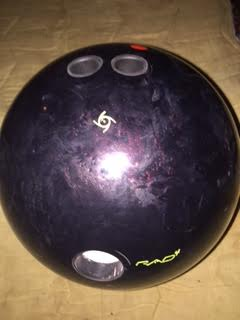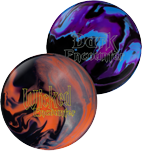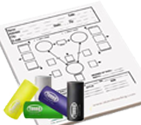
The Code Black
Review Date: 30 November 2016
Reviewed by:
Storm/Roto Grip staffer John Brockland
Style: Stroker Rev Rate: 280-310
PAP: 5.5" over and 1" up
This
recent release brings stateside a ball that has
proven to be very successful overseas for some
time.
The RAD4 core is described by Storm as an
engineering breakthrough.
It is wrapped with R2S pearl coverstock
which has been most often used in Storm’s
midrange Master and Thunder lines.
Here, on this Premier Line release, Storm
says it provides the “perfect balance of length
and reactivity.”
The RAD4
core is described by Storm’s Pro Tour Manager and
Hall of Famer, Del Ballard, as one that “reaches its
preferred spin axis…and just keeps coming!”
Talking about what he has seen from the CODE
BLACK in the hands of touring pros, he said for
higher rev players “an asymmetrical ball will
often…seem to slow down or quit...The CODE BLACK
doesn’t do that!”
For players with lower rev rates, he says
“just crack the shell a little bit to get it to
start up a little sooner and it just kept on coming.
It allowed them to play about three to four
or five boards deeper than they normally would and
the ball would keep coming through the pins.”
For my own
part, I don’t remember ever having a high
performance asymmetrical ball that creates the kind
of angle down lane that the CODE BLACK does.
In fact, with my old man game, it’s rare that
I see any ball hit the spot down lane anymore and
react as if someone literally “kicked it left.”
But the CODE BLACK does that for me!
(Strong
layout on mine: Pin to PAP = 4.5; Mass Bias to PAP =
5; Pin Buffer = 2.)
Others have seen the same.
USBC Hall of Famer and fellow Raisin, Jeff
Richgels, calls the ball “WICKED!”
 
|
||||||||||||||||||||||||
|




